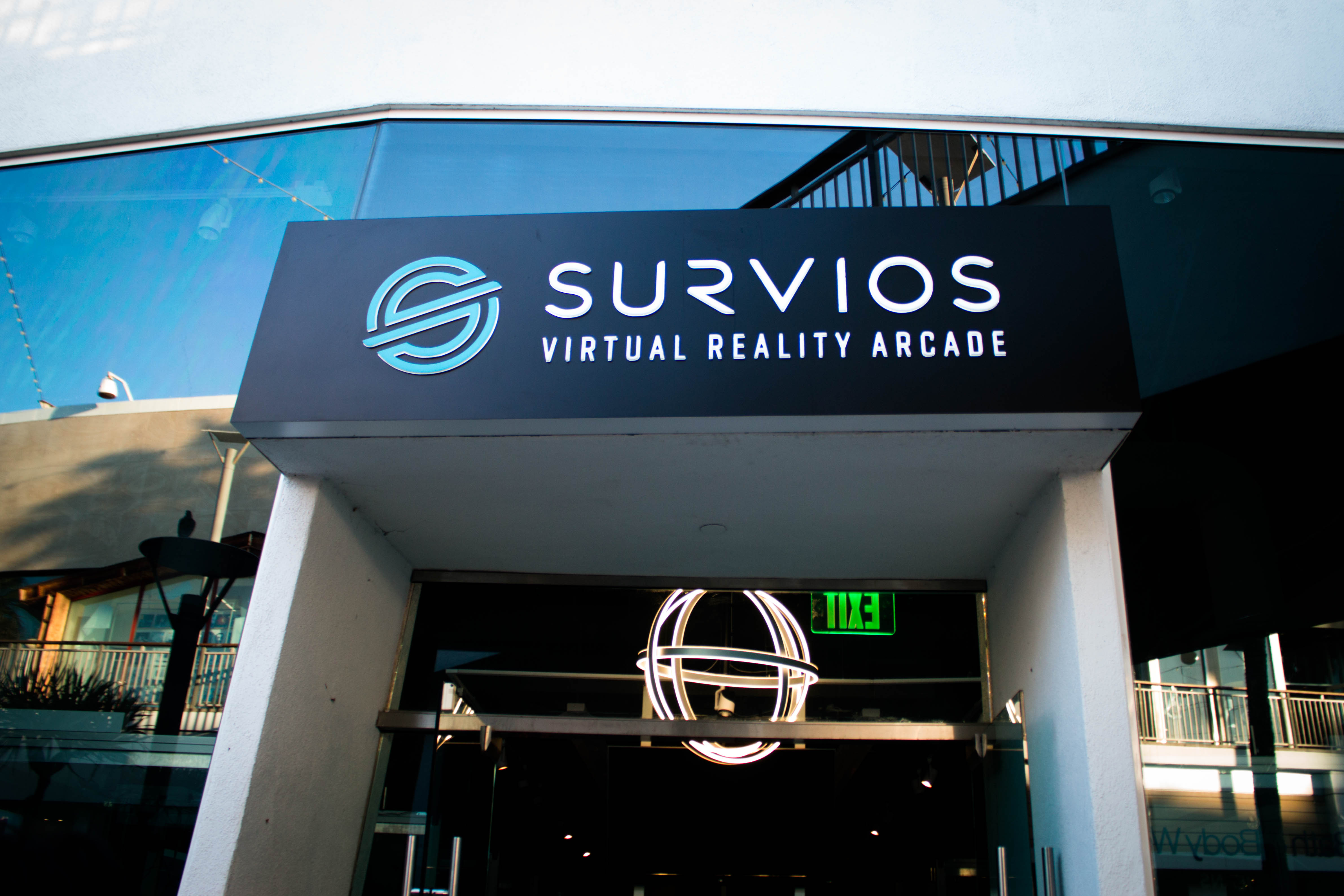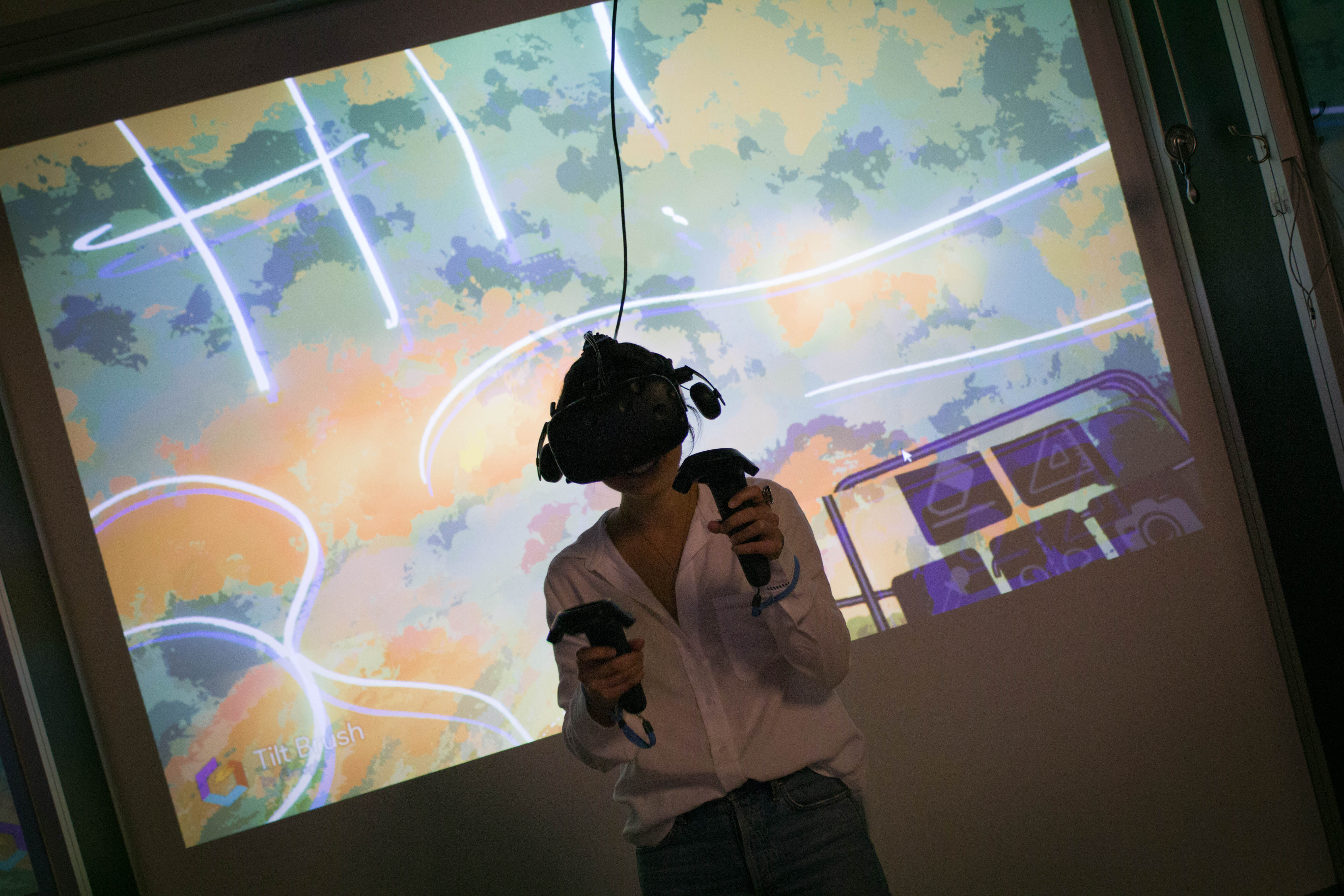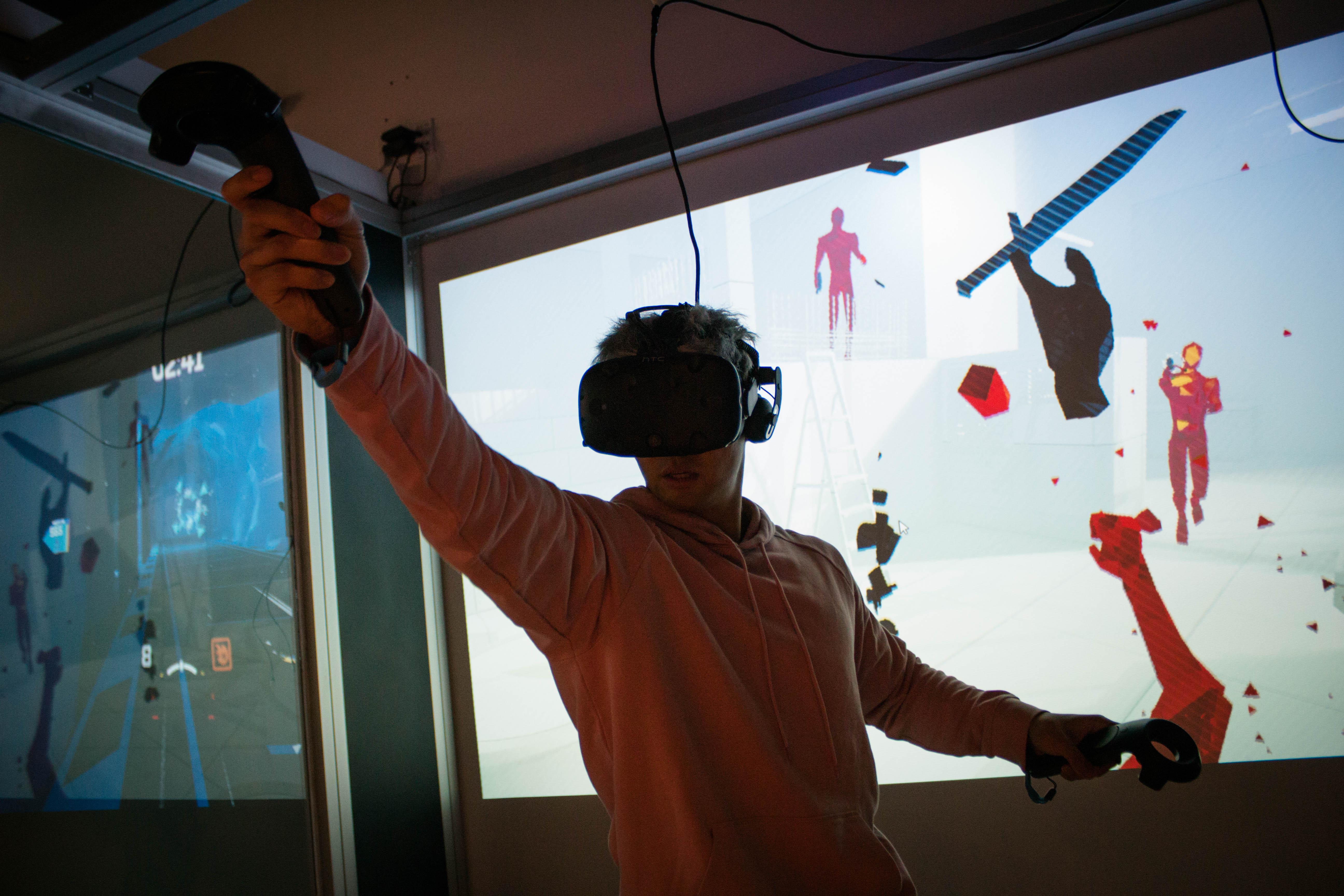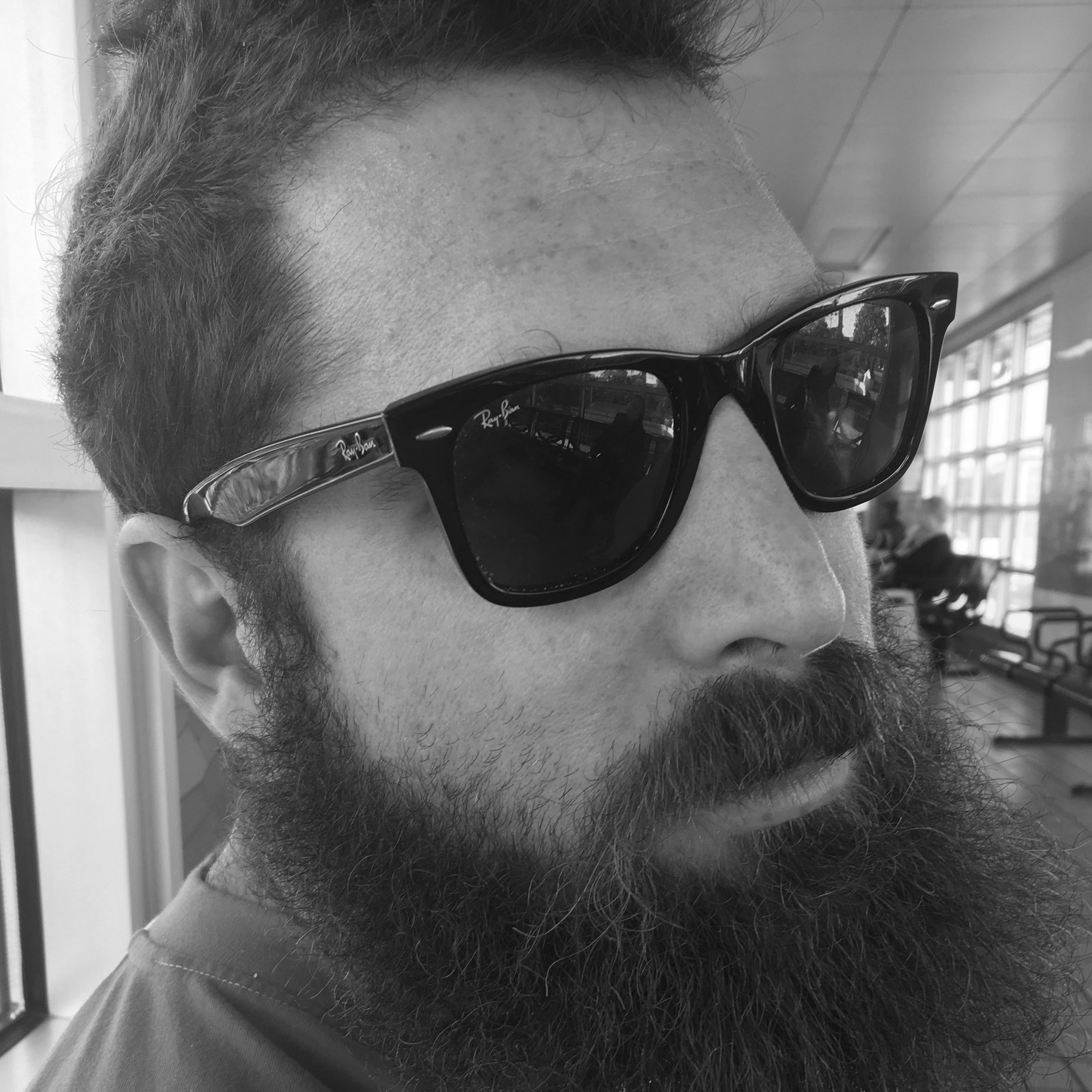
If you’re still thinking of an arcade as the type of place you can go to throw quarters into games like Street Fighter, Pac-Man, The House of the Dead, and that classic side-scrolling version of The Simpsons (where the buttons to play as Bart were pretty much always broken), then you’ll probably be surprised by the futuristically sterile appearance of the Survios Virtual Reality Arcade at Del Amo Fashion Center.
Clear glass walls separate one screen from the next on the two main walls, while a pulley system drops a VR headset and controllers into each cube-like pod. With a bit of seating and some tables (with charging ports) for family and friends, the space looks more like something out of a modern sci-fi movie than the casino-like vibes of a vintage arcade. Of course, all of it makes sense when considering that it may be the future of gaming.
“We knew that the retail market [for virtual reality] was only going to grow so fast,” says Survios’ co-founder and COO, James Iliff. “There were a lot of big projections that came from data agencies that over-promised, but a lot of us who started in VR around 2011 knew that it was going to be a steady slow growth.

“There are a lot of people out there who love VR, but they don’t want to put it in their home yet,” Iliff continues. “They think it’s super exciting, but they don’t want to spend the money to buy it or deal with the friction of installing it in their living room. That’s where we believe the market is saying to us ‘Hey, why don’t you put VR where I go instead of making me change my living situation?’ I think that’s a pretty fair request, and that’s where the genesis of this project began. We want to bring premium VR to everyone, no matter where they go.”
Even before launching their own brick and mortar arcade in Torrance, Survios had already developed a virtually unrivaled presence in the VR arcade world as a game distributor. Spanning hundreds of arcades — ranging from mom and pop locations to large-scale destinations to setups within other businesses such as cell phone stores — across 36 countries, Iliff and the rest of his team had already come pretty close to perfecting their arcade distribution model from a software side of things. In a way, it was all about shrinking their typically expansive games down into an entertaining and fulfilling single serving.
“We had to learn how to give people a compelling experience in a short amount of time that gets them in and out in a satisfying way,” Iliff says. “One of the biggest changes we made was going from profile-based progression to match-based progression. Our retail products, like Raw Data, have special abilities and upgrades that are unlocked over many hours and many matches. We changed that for the arcade version, so you’re earning those upgrades in each stage of the match, and it’s more satisfying for someone to only play for 30 minutes.”

For their launch location, the gaming specialists had to step out of their comfort zone and learn not only the business side of what it takes to provide a high-quality in-person customer experience but also the additional hardware that goes into it. Coming up with an appropriate customer service model isn’t uncommon for a brand reaching into a new business, but most of them don’t also have to consider which special film to use on their glass walls to prevent the movement-tracking lasers in each VR pod from interfering with each other. Of course, now that the Survios team fully realizes what kind of hardware, manpower, and other necessities it takes to physically create and operate a virtual reality arcade, they’re hoping to spread that information as a template to their partners.
“We wanted it to be an amazing spectacle of an experience, so we didn’t want to just put people in these black boxes and say ‘Oh, it’s a mystery,’” Iliff says. “We would always see that at conferences or E3 where there’d be a big castle with a huge line wrapped around it, but no one would know what was inside. That’s not the best way to showcase VR, so we would always do the opposite and put VR on a stage with big screens. The best way to market and sell VR is to show it as a spectacle, because if you see someone moving and you see their avatar on the screen moving with their physical body, then you know you’re not just watching a normal game.”

Josh Chesler used to play baseball for some pretty cool teams, but now he just writes about awesome stuff like tattoos, music, MMA and sneakers. He enjoys injuring himself by skateboarding, training for fights, and playing musical instruments in his off time.

